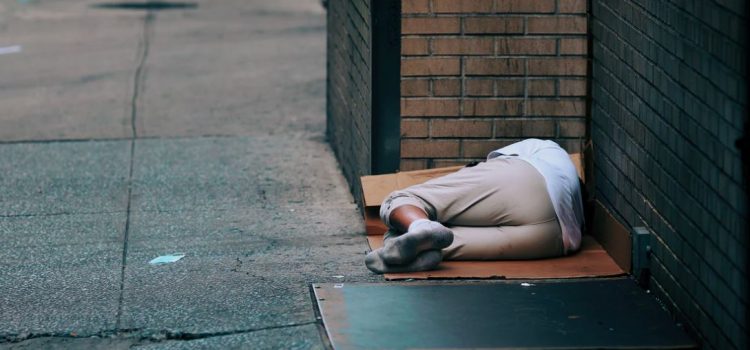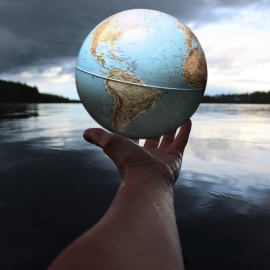

This article is an excerpt from the Shortform book guide to "Caste" by Isabel Wilkerson. Shortform has the world's best summaries and analyses of books you should be reading.
Like this article? Sign up for a free trial here .
What is casteism? How do caste systems contribute to social injustice?
Casteism is a practice of maintaining a hierarchical social order where an inherent characteristic is used as a tool to designate people’s rank in society. Historically, powerful groups have used religion, ethnicity, or skin color to stratify societies.
In this article, we’ll explore the notion of casteism and how it works on three real-world examples: America, India, and Nazi Germany.
The 3 Major Caste Systems: America, India, & Nazi Germany
Wilkerson believes there are three main examples of caste systems in history—the American South, India, and Nazi Germany.
(Shortform note: Wilkerson’s list of the primary examples of caste systems in history contains a notable exclusion: the apartheid system that governed South Africa from 1948 to the early 1990s. Like the systems in Nazi Germany, India, and the US, the South African caste system was codified into law and impacted every aspect of citizens’ lives, including where they could live and work, who they could marry, and even which train car they could ride in.)
The American Caste System
What is casteism and how does it work? According to the author of Caste, the American caste system is divided into two primary castes: The dominant caste consists of people considered “white,” and the lowest caste consists of people considered “Black.” This system has its roots in the American institution of slavery, which was the standard mode of operation on American soil for 246 years, from 1619 to 1865.
(Shortform note: Wilkerson focuses her analysis on these two groups because racial tensions in the United States have historically revolved around the distinction between “white” and “Black.” While focusing specifically on anti-Black discrimination is valuable, ignoring anti-Native American discrimination seems like a significant oversight, since some scholars estimate that roughly 13 million Indigenous people in what is now the United States lost their lives to dominant caste violence, disease, and racism between 1492 and 1900.)
Wilkerson describes how, in the eyes of enslavers, slaves weren’t people—they were symbols of commerce. Their sole purpose for existing was to serve as the machine that generated profits for the landowners. Slaves could be traded like cattle, auctioned like farm machinery, or given away as gifts. They had no say in who they worked for or where they were sent, and they could be separated from loved ones without question. One owner might brand his slaves to stake a claim to them, and owners often sold children to cover debts or settle disputes.
(Shortform note: The fact that enslavers thought of enslaved Africans as property, not people, somewhat undercuts Wilkerson’s argument that American society during slavery was universally understood as a caste system. Enslavers may not have thought of enslaved Africans as a lower caste because caste systems only apply to people, not to property. Therefore, while outside observers and enslaved people might have viewed this society as a caste system, enslavers may have disagreed.)
According to Wilkerson, after Reconstruction (a 12-year period of federally enforced racial equality following the end of the Civil War), dominant caste people in the American South swiftly reclaimed their power through discriminatory laws. These laws dictated where Blacks could live, what types of jobs they could hold, and how they could be educated. Generation after generation grew up within this distorted system, and the author argues that today, the continued suppression of the subordinated caste is normal.
(Shortform note: These laws are known as Jim Crow laws (“Jim Crow” was originally a popular minstrel show character portrayed by an actor in blackface). In addition to the formal laws that Wilkerson mentions, the Jim Crow era also featured a number of social codes that dictated behavior. For example, Black people could not show physical affection to one another in public or sit in the front seat of a white person’s car.)
The Indian Caste System
Wilkerson describes a strong historical connection between India and the United States. In both countries, the dominant caste persecuted the lowest caste, developed laws to maintain this unfair social order, and tortured the lower caste members who broke them. After centuries, both countries abolished the lawful caste system—yet in both cases, the legacy of those social orders persists in the modern era.
According to the author, the difference between the two systems is in the structures of the castes. Contrary to the largely bipolar caste system in the United States, India’s caste system was an intricate system of many castes and subcastes. The five main castes included the 1) Brahmin, 2) Kshatriya, 3) Vaishya, 4) Shudra, and 5) the Dalits. The Dalits were most commonly referred to as “Untouchables,” and fall so low on the social hierarchy that they’re not technically considered part of the caste system at all.
(Shortform note: Wilkerson doesn’t mention that, while Indian caste divisions are rooted in Hinduism, converts to other religions (like Islam and Christianity) often replicate the caste system in their own communities. This means that, in addition to traditional Dalits, there are separate groups of “Dalit Muslims” and “Dalit Christians.” In the upper castes, there are also separate groups for Muslim converts from higher castes (called “Ashrafs”). These divisions further complicate the Indian caste system.)
| Did the Indian and American Caste Systems Contribute to Pandemic Outcomes? According to Wilkerson, it’s no coincidence that the United States and India were the two countries with the most documented cases of Covid-19 by mid-2021. In an Instagram post, she argued that the active caste systems in both countries played a contributing role in the devastation caused by the pandemic. She believes that in both the United States and India, the active caste system encourages disregard for people outside one’s own caste, which in turn promotes self-serving behavior at the expense of lower-caste people who may be more at risk of getting sick. Data from both countries indicate that Wilkerson may be right. In India, Dalits migrant laborers were the first to lose their jobs when pandemic restrictions went into effect, worsening the already rampant poverty among members of the lowest caste. Even worse: Many Dalits who did develop Covid-19 were turned away from hospitals on the basis of caste. Similarly, in the United States, the pandemic disproportionately impacted communities of color, and many people of color struggled to access vaccines when they became available. |
The Nazi Caste System
According to Wilkerson, the Nazi caste system and the American caste system are very similar—and those similarities are intentional. She argues that when creating their caste system (which was designed to separate the dominant Aryan caste from the subordinate caste consisting of Jewish people and other minorities), Nazi leaders were fascinated with the legal system of discrimination in America—particularly the regulations dictating who belonged to which caste. In America, anyone with even one drop of African blood was subordinate. (Shortform note: The Nazis weren’t the only oppressive regime to take inspiration from American racism to create their own caste systems. In Born a Crime, Trevor Noah describes how the politicians devising the South African apartheid system also studied American race relations for inspiration.)
As Wilkerson tells it, the Nazis actually felt the American one-drop law was too harsh. In the end, they adopted a hybrid law based on the laws of Texas and North Carolina, which stated that any person beyond simple classification as dominant or subordinate would be judged based on their associations. The resulting law defined a Jew as anyone who either 1) had three Jewish grandparents, or 2) had two Jewish grandparents and associated with Jews or practiced Judaism. Jews were stripped of their citizenship and prohibited from marrying or having intimate relations with Germans. (Shortform note: Wilkerson doesn’t mention that this law defined whether a person was Jewish based on their grandparents’ religious associations, regardless of whether those grandparents were ethnically Jewish. This shows that the Nazis thought Judaism itself (and not just ethnic Jewish heritage) was a polluting social force.)
| The Nazi Caste System Encompassed Other Groups Beyond Jewish People While Wilkerson primarily focuses on Jewish victims of the Nazi regime, there were several other groups who made up the lowest caste in the Nazi caste system. The Nazis imprisoned, tortured, and killed untold numbers of non-Jewish people, including Polish, Romani, and Black people; gay men; children and adults with disabilities; Christian clergy; and Jehovah’s Witnesses, among others. Historians debate how many non-Jewish victims died during the Holocaust, but the number is somewhere in the millions. |

———End of Preview———
Like what you just read? Read the rest of the world's best book summary and analysis of Isabel Wilkerson's "Caste" at Shortform .
Here's what you'll find in our full Caste summary :
- How a racial caste system exists in America today
- How caste systems around the world are detrimental to everyone
- How the infrastructure of the racial hierarchy can be traced back hundreds of years






